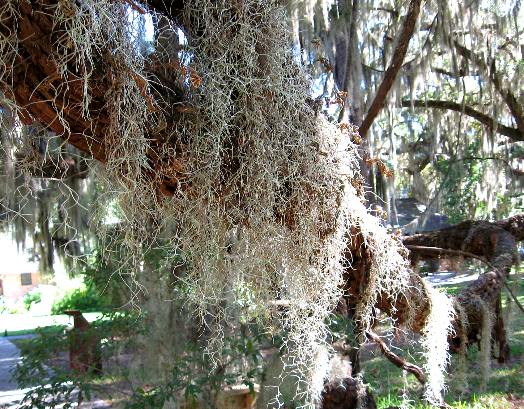Fort Frederica on St Simons Island, GeorgiaFort Frederica National Monument
Frederica is a story of dreams, struggle, victory and defeat. Established in 1736, the fort guarded Georgia's southern frontier. More than a fort, however, the town of Frederica was home to colonists seeking to start a new life. At its peak in the 1740's, some seventy houses lined Frederica's dusty streets. Fort Frederica is best remembered today for repulsing a Spanish invasion of Georgia in 1742. The Battle of Bloody Marsh was the event in that invasion. Yet despite its successful defense of the English colony housed at Ft Frederica, it was fated to disappear. Born in conflict, its death, ironically resulted from the outbreak of peace that came as a result of the Battle of Bloody Marsh. Following the conclusion of the war, the garrison was disbanded, commencing the town's descent into oblivion. In time, Frederica became little more than ruins, a silent reminder of a struggle for empire and broken dreams of the early colonists. Self-reliance was an essential trait for the early settlers. Each "citizen soldier" was issued a watchcoat, musket and bayonet. The Trustees wanted men who would take up the land and hold it for Britain. With the arrival of Oglethorpe's regiment, England sent a large amount of "warlike stores" for the troops. Muskets, flints, 1,800 hand grenades, 36 coehorn mortars and 1,800 shells were among the supplies. By 1741, between 15 and 20 cannons of various sizes were located in Fort Frederica.
Where Mary Musgrove Matthews lived
We located the lot where Mary Musgrove Matthews lived. In 1743 she was General Oglethorpe's Indian interpreter. She had a good house made of tabby -- a type of concrete made with water, sand, lime, and oyster shells. Mary was the daughter of a white trader and a Creek Indian mother. Mary left the Indians at the age of 10 to receive a Christian education in South Carolina. A skillful interpreter, negotiator, and trader, she helped Oglethorpe win the friendship and support of the local Indians. When Fort Frederica was established in 1736, each freeholder was given a lot 60 feet wide by 90 feet deep. For temporary shelter, settlers built huts covered with palmetto leaves, giving the place the look of a camp. John Humble, a laborer and boat pilot, was the original owner of one lit. His wife died in 1736, shortly after he arrived, but he remarried the same year. Humble died in 1740, having built nothing more than a hut. Dr. Frederick Holzendorf, a surgeon to the regiment, purchased a lot in 1743. The foundation is all that remains of his two-story tabby house built sometime after 1743. The life span of Frederica was brief. Most of the ruins that can be seen represent structures built during the town's first thirteen years, from 1736 to 1749. After 1849, when General Oglethorpe's Regiment was disbanded, the town began to die. Houses fell into ruin, and few new ones were built. The kiosk on one lot told of settlers Michael and Alkey Wilson who returned to England after seven years. Subsequent residents included Upheame Campbell, a soldier; John Campbell a tailor; and James Spalding. Military building at Fort Frederica
Barracks at Fort Frederica
This is what remains of the old barracks at Fort Frederica
Remains of barracks at Fort Frederica
Stately live oak trees draped in Spanish Moss line the old streets of Fort Frederica
Spanish moss decorates the live oaks at Fort Frederica. Spanish moss is not a parasite it is an epiphyte or air plant that thrives on the moisture and nutrients in the air.
Spanish moss in the live oaks at Fort Frederica National Monument on St Simons Island, Georgia
The subtle grey color of Spanish moss adds to the unique color of these live oak trees in Fort Frederica National Monument. Spanish moss is an epiphyte or air plant and does not harm the host tree.
Military building that stored ammunition at Fort Frederica
Old ammunition building at Fort Frederica National Monument on St Simons Island, Georgia. Spanish moss in the live oak trees at Fort Frederica National Monument
Spanish moss that we see on the stately live oak trees on the barrier islands is an air plant or epiphyte. They live on moisture in the air and derive nutrients organic matter that is absorbed in the moisture.
Click
here for a St Simons Island Travel Page ** Click
here to learn about the Battle of Bloody Marsh Click here for some Georgia travellogsUntil next time remember how good life is. More Georgia AdventuresAdventures by State ** More 2010 Travel Adventures
Mike & Joyce Hendrix
Mike & Joyce Hendrix who we are We hope you liked this page. If you do you might be interested in some of our other Travel Adventures: Mike & Joyce Hendrix's home page Home ** Travel Adventures by Year ** Travel Adventures by State ** Plants ** Marine-Boats ** Geology ** Exciting Drives ** Cute Signs ** RV Subjects ** Miscellaneous Subjects
We would love to hear from you......just put "info" in the place of "FAKE" in this address: FAKE@travellogs.us Until next time remember how good life is.
|
| ||
|
| |||
|
| |||
|
|

